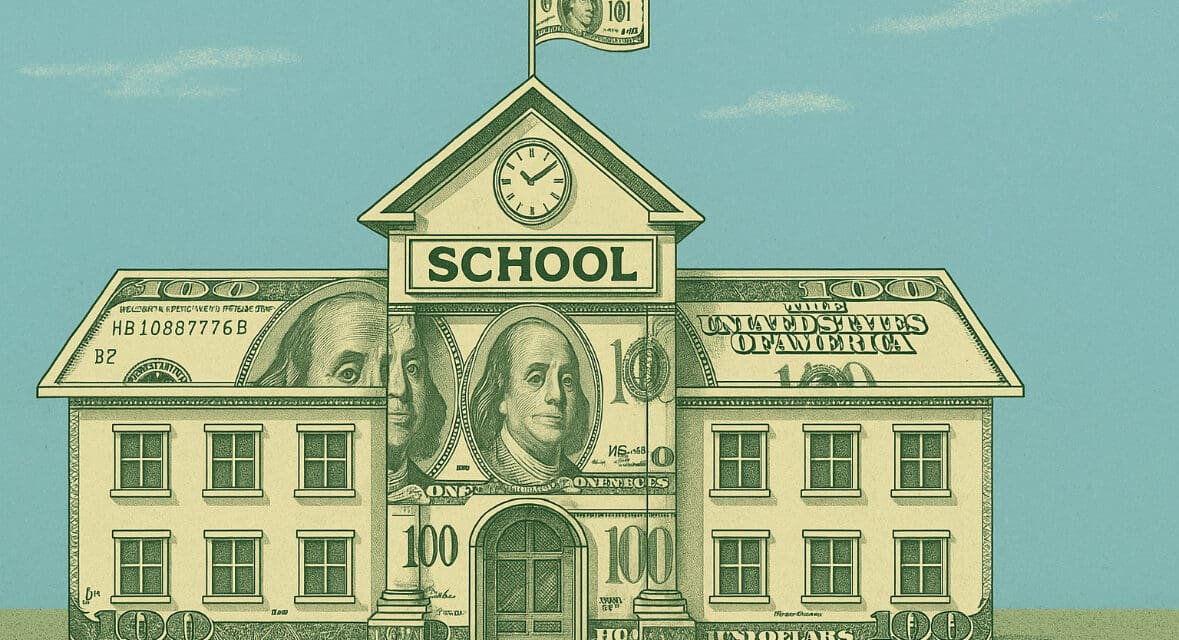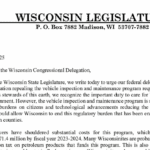A Dairyland Sentinel Perspectives Column by George Mitchell.
I have followed the K-12 education scene in Wisconsin for more than 50 years.
One thing has never changed. Not once have leaders of the public education establishment (teacher unions, administrators, etc.) agreed that taxpayer support is adequate.
A new report from the Wisconsin Policy Forum (WPF) puts this issue front and center. While real (inflation-adjusted) spending per pupil has grown since 2002, WPF finds that spending that “has lagged inflation in recent years and fallen further behind the U.S. average…[T]he share of Wisconsinites’ incomes spent on public education has fallen below the national average.”
The WPF findings will add to the disappointment that public school leaders have expressed over the new state budget. Unsurprisingly, they deem as clearly inadequate the major increase in state support for special education and the added revenue capacity provided by Governor Evers’ “400-year veto.” Their objections likely will dominate a two-day meeting of the Wisconsin Public Education Network in Green Bay this week.
So, are public schools really shortchanged? Some historic perspective helps address that question. It also explains disparities in the current school funding setup.
Between 1970 and 1990, K-12 spending in Wisconsin skyrocketed. In real (2022-23) dollars, per pupil spending grew from $7,003 to $13,037. That’s an 86% real increase in spendable resources. (National Center for Education Statistics, Table 236.70.)
Higher state aid and local property taxes fueled this stunning growth. The result was a backlash in the Capitol in the early 1990s. As explained in an excellent piece of scholarship, “Taxpayer dismay and unhappiness with increasing property taxes [was] at the heart of changes [enacted in the 1990s] to Wisconsin’s school finance system.” (Busch, Carolyn (1997) “Wisconsin Public Education and Property Tax Relief in the 90’s,” Educational Considerations: Vol. 25: No. 1.)
Legislation signed by Governor Scott Walker imposed “revenue limits” designed to slow and occasionally even reduce school property taxes. The basic message to local school officials from legislators and the Governor: “Your resources have shot up. Time for a pause.”
As WPF reports, the net result — in this century — is slight growth in real K-12 spending. What goes unmentioned is that this has occurred on a base that more than doubled between 1970 and 2000.
The enactment of revenue limits effectively locked in place then-existing differences among local districts in levels of spending. An implicit assumption was that those differences simply reflected varying levels of need. This is and was at odds with the fact that times change. Enrollment grows or declines. Educational priorities existing in the early 1990s can shift.
The Legislature has responded over the years with an array of exemptions. It also gave districts the authority to seek local voter approval to exceed revenue limits.
The end result is a complex system of state and local funding that defies easy description. The argument that schools are underfunded requires: (1) ignoring the major growth, built into the base, that occurred between 1970 and 2000; and (2) dismissing the fact that spending has keep pace with inflation since then.
What hasn’t changed? Whatever the level of spending, for the public school establishment it’s never enough.
Mitchell and his wife, Susan, were part of the coalition supporting the creation of the Milwaukee choice program in 1990. Prior to his involvement in the choice movement, he built a strong professional background as a journalist and a government finance specialist. George has remained an education reform advocate for more than three decades.












